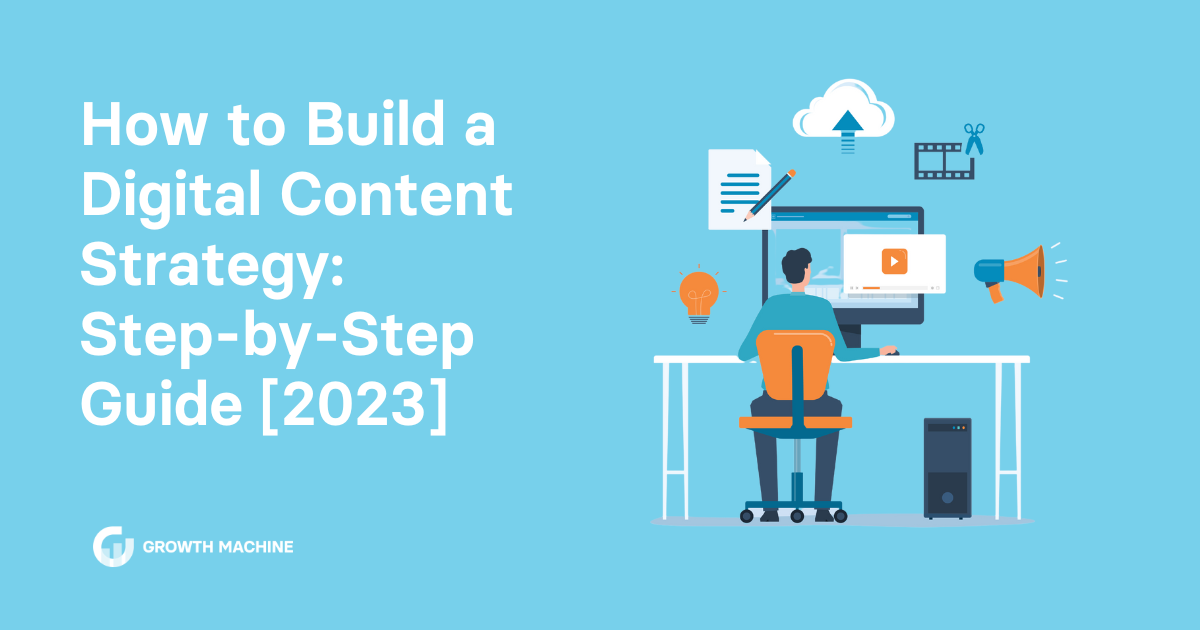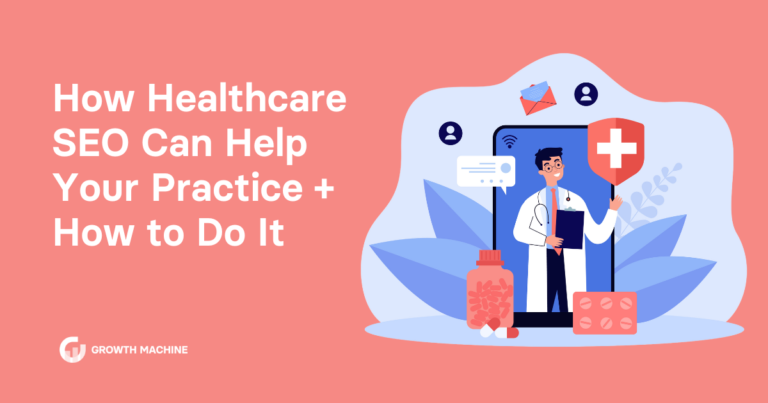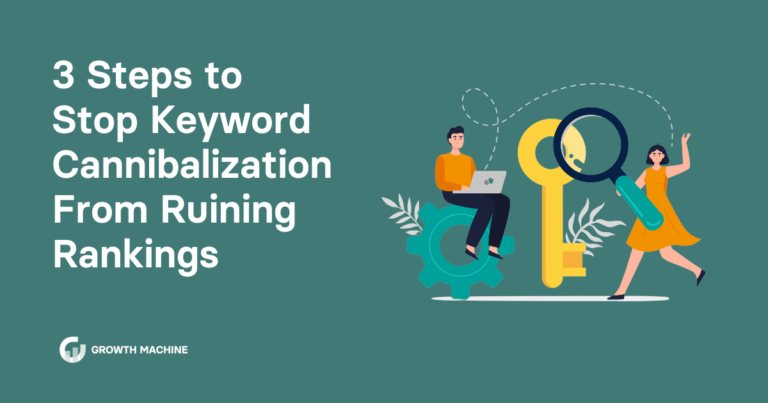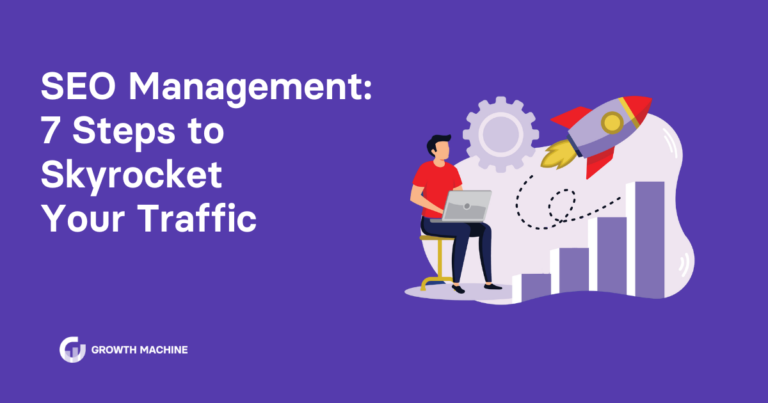How to Build a Digital Content Strategy: Step-by-Step Guide [2023]
Whether you’re new to digital marketing or you’ve been in the game for a while, it never hurts to revisit your digital content strategy.
With more online competition than ever before, a good content marketing strategy has never been more important. Brands (including your competitors) continue to evolve and consistently elevate their content, which means you need to do the same if you want to get seen by your customers online. Digital content strategies can help you achieve exactly that by helping you clarify your objectives, better understand how your audience consumes content online, and create a plan of attack that will help you reach your goals.
In this in-depth guide, we’ll walk you through everything you need to know to build a solid digital content strategy.
What Is a Digital Content Strategy?
A digital content strategy is a detailed plan that outlines how your business will create, publish, promote, and manage your digital content. Digital content includes any type of content or media that is consumed online, including blog content, images, videos, audio, or other forms of interactive media — more on this below.
The digital content strategies used by top brands are effective because content is catered to the customer journey from the first point of contact to long after a purchase is made.
A digital content strategy typically involves several components, including:
- Audience research: Understanding your target audience, their needs, pain points, and online behavior.
- Content creation: Developing high-quality and engaging content pieces that align with your business goals.
- Content distribution: Identifying the channels and platforms where you will distribute your content. These can include social media, podcasting platforms, your website, and more.
- Content optimization: Ensuring your content is optimized for search engines and user experience through techniques like SEO and user testing.
- Content analysis: Understanding how your content is performing by analyzing metrics such as traffic, engagement, and conversions, then using that data to refine your strategy and produce better results.
Why Your Business Needs a Digital Content Strategy in 2023
A strong digital content strategy is a must if you want to establish an engaging online presence and build a solid customer base.
Here are some of the ways that an updated digital content strategy can give your business an edge:
- It helps you attract more customers. Your customers will expect a strong online presence from you and they’ll reward the businesses that consistently serve them valuable and engaging content. A robust digital content strategy can help your business create and distribute content that resonates with your target audience, which helps bring in more customers and makes them want to stick around long-term.
- It gives you a leg up on the competition. Every minute a person spends online, they’re flooded with content from brands trying to win their attention. With so much competition, businesses need a digital content strategy to stay ahead of the game. A winning strategy should fill the gaps in your competitors’ content and help you spot opportunities to differentiate yourself and stand out.
- It saves you time and resources. Without a digital content strategy, you run the risk of wasting time and resources creating content that doesn’t align with your audience. By helping you understand what types of content to prioritize, an effective strategy can ensure you deliver the best results with the resources at your disposal.
- It ensures that your content is aligned with your business objectives. The objectives outlined in your digital content strategy should support your overall business goals. By defining clear targets and KPIs (key performance indicators), you’ll be able to get a better handle on what types of content are most effective at driving business growth.
How to Create an Effective Digital Content Strategy for Your Business
When it comes to developing a high-quality content plan, there are a few key bases you’ll want to cover.
Step 1: Conduct a Content Audit
A quick audit of your existing content can give you an idea of what’s resonating with your audience and what isn’t.
Start with your website, social media profiles, and anywhere else you are publishing content to see what people are engaging with. Look for outdated or irrelevant content, as it can potentially confuse your audience.
Focus on the big picture. Perhaps you’ve been posting too much on one topic or area of your business while neglecting others. Or maybe your content isn’t performing well because you haven’t optimized it for relevant keywords.
By identifying gaps in your existing content, you can make adjustments that will help you reach your goals more effectively.
Step 2: Define Your Goals and Objectives
Before you dive into creating digital content, it’s important to define your goals and objectives.
Start by thinking about what you want to achieve with your content plan. Maybe you want to increase brand awareness, generate leads, or drive sales. Whatever it is, make sure your goals are specific and measurable. For example, instead of setting a goal to “increase website traffic,” make it “increase website traffic by 25% in the next 3 months.” Consider what metrics to measure at each stage of your funnel to ensure that you’re delivering the best online experience for your customers.
Another important factor to consider is how you want to present your brand online. Think about your brand voice and values. What message do you want to communicate through your content? How do you want to position your brand in the market? By getting clear on what your brand is all about and what you stand for, you can ensure you’re creating content that feels authentic across platforms.
Step 3: Identify Your Target Audience
One of the most important things to consider when creating a digital content strategy is your target audience.
After doing your audit, you should have an idea of who’s engaging with your content. You can also use tools like Google Trends or Facebook Audience Insights to get a better understanding of your audience’s demographics and online behaviors. Once you’ve developed your audience criteria, identify their interests, pain points, and needs, and how your content can help them to accomplish their goals.
A good question to ask yourself is who would benefit from your content the most. For example, if your company sells workout gear, you might consider targeting busy moms who are looking for high-quality, comfortable gym clothing. If you build websites for startups, you might target CMOs or CEOs who are looking for a solution that’s affordable and easy to customize.
Just as your business might have more than one customer type, you might have several online audiences. Creating user personas, or buyer personas, is a great way to identify different groups of online customers. User personas are fictional representations of your customers based on demographic and psychographic data. You can even assign them names, ages, professions, and hobbies to make them more realistic.
By figuring out exactly who you’re creating content for, you can figure out where that audience lives and what channels to focus on.
Step 4: Choose Your Content Types
With all the different types of content out there these days, how do you even know where to start?
If you jump in and try to do everything from a podcast to a newsletter to a blog to video content like YouTube and TikTok right off the bat, you may find yourself overwhelmed quickly.
When it comes to deciding what to put in your content calendar, think back to your audience. Think about which content formats they prefer to consume, then brainstorm relevant content ideas that suit their interests.
Aside from your audience, you also need to consider your brand’s resources and capabilities. If you don’t have anyone on your marketing team who understands how to produce video content, you may want to look at other forms of content instead.
Depending on your audience, here are some of the most common forms of digital content:
Blog Posts
Blogging is one of those content forms that’s been around for a long time — and for good reason! A single piece of content on your blog can outlast almost any other form of content and bring visitors to your website for years to come.
If it isn’t already, blogging should be a critical part of your digital content strategy. Consistently producing blog content in your niche helps to establish your business as an authority.
A 2021 survey of 1,000 consumers revealed that while more than 80% of people consider trust a deciding factor in their buying decisions, only 34% of people actually trust the brands they interact with. One of the best ways to build that critical trust is by building credibility with your audience through consistent blog content.
Beyond that, search engines love fresh, high-quality blog content, and will reward you for it by improving your search ranking. That means customers will have an easier time finding you online, which means more leads and sales for your business.
Blog posts are our bread and butter at Growth Machine, so be sure to schedule a time to chat with us if you know this is the strategy you want to go with and you want help.
E-Books
E-books are a lead generation tool that typically live on your website or landing page. After website visitors or social media users submit a form with their contact information, they’ll be granted access to a resource that adds value or educates them about a pain point.
Ebooks are typically longer, more detailed, and published less often than blog posts. But when paired with your blog posts, they’re a great form of content to convert website visitors to leads and move potential customers through your funnel.
Videos
With the rise of platforms like TikTok, video content has exploded in popularity over the past few years. Over 91% of businesses use video as a marketing tool in 2023 — and for good reason, according to Wyzowl.
Here are some stats Wyzowl gathered that highlight the ROI of video content over the past year:
- 95% of video marketers say that video content helped increase brand awareness
- 91% said video marketing helped them increase traffic
- 90% said that video helped them generate new leads
- 87% said video marketing resulted in increased sales
The great thing about video content is that it can be repurposed across several different platforms. After seeing TikTok’s quick jump in popularity, several social media platforms came out with their own version of short-form video, including YouTube shorts, Instagram Reels, and even Reddit’s new video editor, which means you only have have to create the content once and post it across multiple platforms to increase your brand’s reach.
Lots of our customers repurpose the info-packed articles we produce for them into a series of videos for social. A smart digital content strategy squeezes the most ROI out of each content piece to avoid staring at a blank content calendar.
Podcasts
Podcasts are an incredibly valuable form of content to add to the mix. When implemented as part of a digital content strategy, they can amplify your existing channels and create more personalized connections with potential customers. You can use existing blog posts as an easy place to start for episode ideas.
The great thing about podcasts is that the content is highly diverse, and can be catered to a wide range of audiences. In fact, interest in podcasts has risen to 34% in recent years.
Consider e-commerce giant Shopify’s now-stagnant podcast, Thank God It’s Monday. The podcast’s content catered to entrepreneurs and featured interviews with a number of high-profile business figures, including marketing expert Seth Godin and serial startup entrepreneur Gary Vaynerchuk. The podcast was the perfect content format to target ambitious entrepreneurs — exactly the types of people who might need a Shopify store.
Podcasts offer a unique opportunity to display your expertise and further bolster your domain authority with search-engine-optimized episode formatting. They’re also a great opportunity to reach new audiences, especially if you get featured as a guest on another brand’s podcast.
Social Media Posts
Social media content is the cornerstone of every successful digital content strategy. According to a study from Oberlo, 75% of today’s internet users use social media to research brands. If you aren’t using at least one social media platform already, the time has come to join the conversation.
The most popular social media networks include:
- YouTube
- TikTok
- Snapchat
Posting on social media is critical if you want to meet your customers where they already spend their time online. By figuring out what kinds of social media content they prefer, then tailoring your content ideas to those preferences, you can ensure your brand stays top of mind.
Step 5: Decide Which Channels You’ll Use to Distribute Your Content
Just as you can create content in different forms, you also have to decide which channels you’ll publish your content to.
With so many channels available, it can be overwhelming to decide where to focus your efforts. Let’s break it down in a way that’s easy to understand.
First, think back to your target audience. What channels are they using the most? Which social media platforms are they most active on? Do they prefer email or text communication? Are they avid blog readers, or do they prefer to listen to podcasts? Knowing your audience’s preferences is key to determining which channels to use.
Next, consider your content format. Different formats work better for different channels. For example, social media is great for content with a short lifespan, such as memes, trends, infographics, and tweets, while your blog or YouTube is better for longer-form content.
Another important factor to consider is owned vs. external channels:
- Owned channels: Platforms you own directly, such as your blog, email list, and website.
- External channels: These include podcasting platforms like Spotify and Apple Podcasts, social media platforms like Instagram, TikTok, and Facebook, other businesses’ websites, and social publishing platforms like Medium.
For optimal results, we recommend posting on a mix of owned and external channels. External channels like social media give you the best chance to reach new users, while your owned channels will give you the opportunity to nurture those people into becoming leads and eventually customers.
Lastly, consider your resources. Does your business have the time and manpower to manage multiple channels effectively? If not, it’s better to focus on one or two channels that you can really nail, rather than spreading yourself too thin.
Step 6: Analyze and Refine Your Strategy
So you’ve created a digital content strategy for your business, but how do you know if it’s working?
It’s important to stay on top of your analytics and track your content performance regularly. This means looking at metrics like:
- Page views
- Bounce rates
- Time spent on page
- Conversion rates
- Social media engagement (followers, likes, comments, shares, saves)
A tool like Google Analytics or a social media analytics tool can help you pull this data with ease.
Another important factor to consider is your SEO. Are your blog posts and website content optimized for keywords? Are you using your meta descriptions and tags effectively? Are your social media posts getting a wide reach from hashtags and SEO-focused captions?
If you’re struggling to optimize your content for SEO, a partner like Growth Machine might be the answer. Our rigorous SEO process ensures that each piece of content does its job — bringing more customers to your site and helping you get the most out of your content. Check out some of our recent case studies to see how we’ve helped other clients grow their business.
Next, consider your target audience. Are they engaging with your content? Are they sharing it on social media or commenting on your blog posts? If not, it might be time to reevaluate your digital content strategy.
If your online engagement isn’t as high as you’d like, check out this guide on how to improve community engagement.
Lastly, don’t be afraid to try new things. Maybe you want to test out a new content format, like short-form video or podcasting. Or perhaps you want to try an influencer campaign to help your brand gain traction. The possibilities are endless, so don’t be afraid to get creative and take risks.
Common Digital Content Strategy Mistakes to Avoid
By now, you should have an understanding of what it takes to create a great content strategy. But while it can be tempting to start creating tons of content as quickly as possible, make sure to steer clear of these common mistakes:
Mistake 1: Focusing Too Much on Quantity Over Quality
When it comes to digital content, it can be tempting to focus on producing as much content as possible in order to optimize your chances of reaching your ideal customer. But this isn’t always the best approach.
If you’re sacrificing content quality at the expense of churning out a high volume of mediocre blog posts or videos, your audience is going to notice. Worst case scenario: they might even tune out your brand altogether.
On the other hand, if you’re producing well-crafted, quality content that adds real value to their lives, they’re going to keep coming back for more.
Mistake 2: Neglecting Search Engine Optimization (SEO)
SEO is key for getting your content in front of the right people at the right time. If your content isn’t optimized for search engines, it’s going to be hard for people to find. And if people can’t find your content, they’re not going to engage with it, share it, or convert to a paid customer.
Neglecting SEO can lead to wasted resources. If you’re creating amazing content but nobody can find it, you’re essentially throwing away all the time and effort you put into creating that content.
By taking the time to optimize your content for SEO, you’re maximizing the impact of your efforts and ensuring your content gets the visibility it deserves.
Consider saving time by hiring a team of SEO experts. Here are five signs that you may be ready to work with a professional instead of spinning your wheels trying to make SEO work.
Mistake 3: Not Prioritizing Audience Engagement
When it comes to digital content strategies, audience engagement is one factor that should not be overlooked.
Let’s face it — nobody likes a one-sided conversation. If you’re creating content but not taking the time to check if your audience is engaging, it’s like shouting into the void. If people aren’t engaged with your content, they’re not going to stick around for long.
Audience engagement is also important for building a community around your brand. Consider the e-commerce brand Mad Rabbit, which carries products for tattoo aftercare. The brand has built a highly engaged online community through their blog, where they publish regular articles on tattoo aftercare advice, their perspective on tattoos in modern culture, and current tattoo trends. They also utilize user-generated content on social media to demonstrate the effectiveness of their products and reach new users, as well as a Discord community for tattoo lovers to connect and chat directly with other members of the community.
When you take the time to curate an online community and engage them with purposeful content through a variety of channels, you’re more likely to wind up with a loyal, engaged following that is ready to buy whatever you’re selling.
Help Your Business Stand Out With a Winning Digital Content Strategy
Digital content strategies are essential to establishing an engaging online presence for your brand. When armed with an effective content plan, you’ll have no problem making an impact in the digital space.
By taking the time to refine your strategy and prioritize your audience’s needs, you can create content that establishes your brand as an online leader and drives more results for your business.
Whether you’re a seasoned content marketer or looking to create your first digital content strategy, Growth Machine is here to help. We’ll help you get it right the first time with a content strategy focused on articles that are packed with value, tailored to your audience’s needs, and optimized for search engines in order to drive more results for your business.
Contact us today to learn more about how we can level up your digital content strategy by creating expert-written, SEO-focused blog posts on a consistent schedule to keep your audience engaged and coming back for more.







